[EN/中文/日本語] Train | Subway | 地下鉄 | 列車 (HKxJPxSG Vol.1.0)
DISCLAIMER: The content was originally written in English and then was translated into Chinese and Japanese respectively via Google Translate. Should any controversy arises, English version shall be used as main reference.
The images used in this post may be subject to copyright and not necessarily describing the alleged countries. The pictures and GIF if belong to external source are cited clearly under each image.
---Enjoy Reading ---
免责声明:内容最初是用英文书写的,然后分别通过谷歌翻译翻译成中文和日文。如有争议,应以英文版为主要参考。
本文中使用的图像可能受版权保护,并不一定描述涉嫌的国家。每幅图像下都清楚地列出了属于外部源的图片和GIF。
---享受阅读 ---
免責事項:コンテンツはもともと英語で書かれていて、Google翻訳を介して中国語と日本語に翻訳されました。紛争が発生した場合は、英語版を主な参照事項にする必要があります。
この記事で使用されている画像は、著作権で保護されている可能性があり、必ずしも問題の国を説明するものではありません。外部ソースに属する画像やGIFは、各画像の下に明確に表示されます。
---読書を楽しむ---
🚆 🚉🚆 🚉🚆 🚉🚆🚉 🚆🚉 🚆🚉 🚆🚉 🚆🚉 🚆🚉 🚆🚉 🚆🚉 🚆 🚉🚆🚉 🚆🚉 🚆🚉 🚆🚉
As a D.I.Y and budgeted traveler
most of the time I have to rely on landed public transport.
Although in some countries like Australia, New Zealand, Iceland, Greece etc.,
I would generally opt for self-drive
which seems to be more feasible and is more relatively convenient,
not all countries are safe and comfortable to drive
unless you are up for serious challenge.
作为自助(D.I.Y)和有低预算的自助旅行者
大部分时间我都必须依靠登陆的公共交通工具。
虽然在澳大利亚,新西兰,冰岛,希腊等一些国家,
我通常会选择自驾车
这似乎更可行,更方便,
但是并非所有国家都是安全与舒适地驾驶
除非你想来个严峻的挑战。
セルフヘルプ(D.I.Y)と低予算のセルフヘルプ旅行者
ほとんどの場合、私は着陸するために公共交通機関に頼らざるを得ません。
オーストラリア、ニュージーランド、アイスランド、ギリシャなどでは、
私は通常、自分で運転することを選択します
これはより実現可能で便利です。
しかし、すべての国が安全で快適な運転ではない
あなたが深刻な挑戦を思いつきたいのでない限り。
Therefore, train, bus, tram and taxi become common public transport
to transfer me from one place to another destination.
Not too surprise though,
Japan, Hong Kong and Singapore are the top Asia countries
with well-developed public transportation system,
especially in train transit industry
which meets much of my transport needs economically.
因此,火车,公共汽车,电车和出租车成为普遍公共交通工具
把我从一个地方转移到另一个地方。
不过,
日本,香港和新加坡是亚洲的顶级国家
随着公共交通体系的发展,
特别是在列车运输行业
这在经济上符合我的大部分运输需求。
その結果、電車、バス、トラム、タクシーが普遍的な公共交通機関となります
私をある場所から別の場所に移動する。
ただし、
日本、香港、シンガポールはアジアのトップ国です
公共交通機関の開発に伴い、
特に鉄道輸送業界では
これは私の輸送ニーズの大部分と経済的に一致しています。
If you were a daily commuter
you might quickly relate to this topic.
In Hong Kong they called it MTR (Mass Transit Railway);
In Japan Tokyo they called it Tokyo Metro Subway;
In Singapore we called it MRT (Mass Rapid Transit).
They may be named differently
but they serve the same purpose -
to commute.
如果你是一个每日通勤者,
你可能会很快对这个话题有所共鸣。
在香港,他们称之为港铁(地铁)。
在日本东京,他们称之为东京地铁;
在新加坡,我们称之为捷运(捷运)。
他们的名字可能不同
但他们服务于相同的目的 -
通勤。
あなたが毎日の通勤者の場合、
あなたはすぐにこのトピックに共鳴するかもしれません。
香港では、それをMTR(地下鉄)と呼びます。
東京では、東京メトロと呼ばれています。
シンガポールでは、MRT(MRT)と呼んでいます。
彼らの名前は異なるかもしれません
しかし、彼らは同じ目的を果たします -
通勤。
Social Competition | 社会竞争 | 社会的競争
If you wanted to experience local culture in a nutshell,
take a train!
Observe closely each commuter's behavior (not the creepy way though)
and you would find out how locals daily routine look like,
which I described as a metaphor for life in their own city.
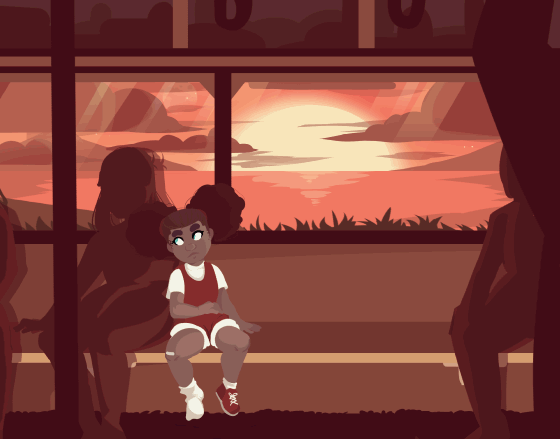
source
如果你想快速体验当地文化,
坐火车去吧!
仔细观察每个通勤者的行为(当然不是令人毛骨悚然的方式)
你会发现当地人的日常生活是怎样的,
我将其描述为他们自己的城市生活的隐喻。
地元の文化をすばやく体験したい場合は、
列車で行く!
コミューターの行動を注意深く観察してください(もちろん、気味の悪い方法ではありません)
あなたは地元の人々の日常生活が何であるかを知るでしょう。
私はそれを自分たちの都市生活のための隠喩として描写します。
What makes these three countries relevant is
the people traffic during the hassle bustle rush hour.
It's somehow like a game,
overtaking the ones in front of you,
rushing into the tiny steel box,
competing for seats or
jostling for position.
Once you hear the do-do-do-do sound you are safe!
And better yet,
whoever the first taps out from the station wins!
这三个国家所息息相关着的是
在熙熙攘攘的高峰期间的人们交通。
它有点像游戏,
超越在你面前的那些人,
冲入小钢盒子里,
竞争席位或
争夺地位。
一旦你听到嘟-嘟-嘟-嘟的声音,你就安全了!
更可谓的是,
谁第一个从车站出来他就赢了!
3カ国は密接に関連している
賑やかなピーク時に人々の交通。
それはゲームのようなビットですが、
あなたの前にいるものを超えて、
小さなスチールボックスに、
競争的な座席または
ステータスのために戦う。
ビープ音が鳴ったら、あなたは安全です!
さらに、
誰が駅の最初の1つを獲得する!
That action sounds like a context of social competition, isn't it?
Nothing personal but if someone manages to butt in front of you
it's just business.
After all, everyone is in hurry to reach their destination.
这种行为听起来像是社会竞争的背景,不是吗?
没有什么个人不个人的,但如果有人设法超越在你面前
这只不过是业务。
毕竟,每个人都急于到达目的地。
この行動は、社会的競争の背景のように聞こえるでしょうか?
個人的なものは個人的なものではなく、誰かがあなたを超えて管理している場合
これはちょうどビジネスです。
結局のところ、誰もが目的地に到着することを熱望しています。
Train Delay | 列车延误 | 列車の遅延
How many of you could resonate to train delay issue?
Any Singaporean here? :)
你们当中有多少人能够与火车延误问题有所共鸣?
这里有新加坡人吗? :)
列車の遅延問題に共感できる人はどれくらいですか?
シンガポールはここにありますか? :)
In Singapore it seems to be "normal" that
there is train delay due to train signal fault.
Many commuters are peeved when they heard such announcement.
Bear with it Singapore folks
since Singapore is massively upgrading the MRT system these coming few years
"We're Working On it" that's the campaign ad
Fortunately, free bus ride is provided when such incident happen in due course.
Not so bad after all, right?
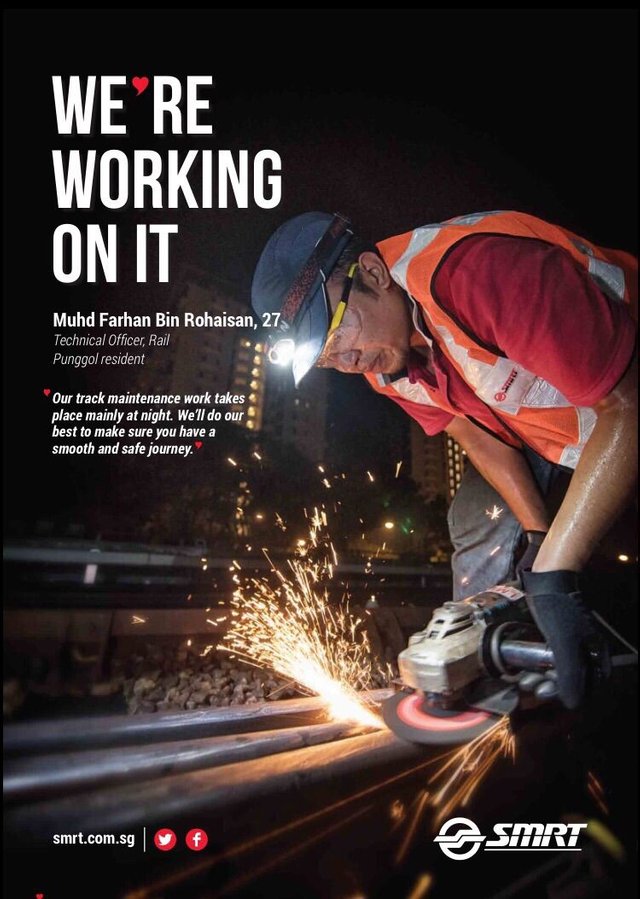
source from http://blog.smrt.com.sg
在新加坡,这似乎是“正常的”
列车信号故障导致列车延误。
许多上班族听到这样的消息后都会感到不安。
忍受它吧 新加坡人
因为新加坡在未来几年正在大规模升级捷运系统
“我们正在努力”这是广告系列
幸运的是,当这种事件发生时,捷运公司都一律提供免费乘坐巴士。
不是太糟糕吧,对吧?
これはシンガポールでは「正常」と思われる
列車信号の障害により列車が遅れた。
そのようなニュースを聞いた後、多くのオフィスワーカーは不安を感じる。
シンガポールにしよう。
シンガポールは今後数年間でMass Rapid Systemをアップグレードしているため
「私たちは頑張っています」これはキャンペーンです
幸運なことに、これが起こると、MRT企業はすべて無料の乗り物を提供しています。
あまりにも悪くない、右か?
In Hong Kong I realized that there are 2 platforms side-by-side
which head to the same direction and arrive almost the same time.
It absolutely caught me in surprise!
Therefore even when I traveled to Central during lunch time on weekday,
it was very much less congestion compared to that of Singapore.
Furthermore, the subway frequency is very high (every one to two minutes)
in the aim of clearing up the crowds as quick as possible.
I haven't experienced any severe train delay for my past three Hong Kong trips,
still I wonder how Hong Kong MTR handles train fault or train delay?
One thing I still felt salty (bummed out) was that
when I asked for platform direction in Cantonese (Yes I can speak Cantonese)
to one of the ushers who leaded the crowds,
he told me reluctantly to read the signboard myself.
Probably he mis-thought that I were Hongkonger since I spoke in Cantonese.
在香港,我意识到有两个平台是并排的
它们朝向相同的方向并几乎同时到达。
这让我惊喜万分!
因此,即使我在平日的午餐时间前往中环,
与新加坡相比,它的拥堵程度要低得多。
此外,火车频率非常高(每一到两分钟)
尽可能快地清理人群。
我过去的三次香港旅行没有遇到任何严重的火车延误,
但我还想知道香港地铁如何处理列车故障或火车延误?
有一件事我仍然感到沮丧的是
当我以广东话问平台方向时(是的,我会说广东话)
对引导人群的引导者之一,
他不情愿地告诉我自己要读招牌。
可能是我用粤语发言,他可能认为我是香港人。
香港では、2つのプラットフォームが並んでいることに気付きました
彼らは同じ方向に直面し、ほぼ同時に到着する。
これは私を驚かせる!
私が平日のランチタイムにCentralに行っても、
シンガポールと比較して、その渋滞はずっと低いです。
さらに、列車の周波数は非常に高い(2分ごとに)
できるだけ早く人をクリーンアップしてください。
香港への私の過去の旅行では、深刻な電車の遅延は経験していません。
しかし、香港の地下鉄が電車の故障や電車の遅延をどのように処理しているかを知りたい。
私がまだ落ち込んでいると感じていることは、
私が広東語でプラットフォームの方向を聞いたとき(はい、私は広東語を話す)
群衆を導くガイドの1つは、
彼は消極的に私に看板を読むように言った。
たぶん私は広東語で話します。彼は私が香港だと思うかもしれません。
In Japan Tokyo Metro the commuter traffic is as crammed as that of Singapore.
Although sometimes the system might encounter delay,
the electronic signboard indicates the next few coming trains clearly with minutes of delays.
That is certainly genuine.
I was shocked to hear also that for some severe delays in Japan Railway (JR)
the captain would apologize to every passenger sincerely.
That's being too harsh to the captain and crews
although I know that they take it professionally.
Bravo I salute Japan!
在日本的东京地铁里,通勤交通和新加坡一样紧张。
虽然有时系统可能会遇到延迟,
电子招牌显示接下来的几个列车明显延误几分钟。
这当然是天才。
我很震惊地听到日本铁路(JR)的一些严重延误,
车长会真诚地向每一位乘客道歉。
这对车长和工作人员来说太苛刻了
尽管我知道他们是专业的。
真棒!我向日本致敬!
日本の東京メトロでは、通勤者の交通量はシンガポールほど厳しいです。
システムによっては遅延が発生することがありますが、
電子看板は、次のいくつかの列車が数分遅れることを示しました。
これはもちろん天才です。
私はJRで深刻な遅れを聞くことにショックを受けた。
船長はすべての乗客に心から謝ります。
これはキャプテンとスタッフにとっては過酷です。
私は彼らがプロであることを知っていますが。
すごい!私は日本に敬意を表します!
Do's and Don'ts | 忌讳 | タブー
Generally train etiquette is that
you pay the correct amount of fare,
queue orderly,
be kind to other commuters
and you'll have the same respect from others.
The regulation exists in every country
and several common rules and understandings are:

source
一般来说,火车礼仪就是这样
你支付正确的票价,
有序排队,
善待其他乘客
你会得到同样的尊重。
该规定存在于每个国家
以及一些常见的规则和理解是:
一般的に、これは列車のエチケット
あなたは正しい運賃を支払う。
順序付けられたキューイング、
他の乗客を治療する
あなたは同じ尊敬を得るでしょう。
このルールは各国に存在する
また、いくつかの一般的なルールと理解は次のとおりです。
- No spitting | 不随地吐痰 | 吐き出さないでください
- No smoking | 禁止抽烟 | 禁煙
- No littering | 不乱扔垃圾 | ごみをつけない
- No loud music | 不播放大声的音乐 | 大きな音楽を演奏しないでください
- Give way to alighting commuters | 让路给下车的乘客 | 乗客に降りる
- Give seats to prioritized commuters (pregnant women, parents/guardians with infants/kids, injured/disable people, elderly) | 为优先乘客提供座位(孕妇,带婴幼儿的父母/监护人,受伤/残疾人,老人)| 優先受講者(妊婦、幼児、保護者/保護者、高齢者の保護者)の座席を提供する
However, I found out that there are very interesting
and special rules and particular laws lay in these 3 countries.
但是,我发现有很有趣的
以及这三个国家的特殊规定和特定法律。
しかし面白かった
これらの3国の特別な法律と特定の法律。
Singapore | 新加坡 | シンガポール
- No eating and drinking on the train (by laws) | 不可在火车上吃喝(依法)| 電車で飲んだり飲んだりしないでください(法律に従って)
- No durian | 不可携带榴莲 | ドリアンなし
(Extracted from http://www.traveltaboo.com/singapore-travel-tips-dos-and-donts/)
Hong Kong | 香港 | 香港
- No busking unless upon authorized | 除非经过授权,否则不得在火车内街头演艺 | 許可されていない限り、列車の通りでは行かないでください
- No animals | 不可携带动物 | 動物はいません
- No feet on seats | 不可把脚放在座位上 | あなたの足を座席に置かないでください
- No other vehicles allowed, such as bicycles, handcart and barrows. Is scooter considered vehicle? | 没有其他车辆可以使用,例如自行车和手推车。滑板车是否被认为是车辆?| 自転車やカートなど他の車両は利用できません。スクーターは乗り物と考えられていますか?
- No drunks | 醉汉免进 | ドランクが脱出する
- No dodgy outfits or improper dressing | 没有狡猾的服装或不适当的穿衣 | 衣服も不適切な衣服もない
- No swearing | 不可爆粗 | 非爆発性の粗い
- No flying objects, such as balloons and kites. | 不可携带飞行物体,比如气球和风筝。| 風船や凧などの飛行物体を運ばないでください。
(Extracted from http://www.scmp.com/news/hong-kong/education-community/article/1936135/9-mtr-laws-everyone-hong-kong-has-seen-broken)
Japan | 日本 | 日本
- No shouting - remain quiet or even better, silent | 不可大喊 - 保持安静甚至更好,沉默 | 叫ばないでください - 静かにするか、より良くする、沈黙させてください
- No nose-blowing - wear a surgical mask in case of illness | 不可擤鼻子 - 生病时戴口罩 | あなたの鼻をなめることはできません - あなたが病気になったらマスクを着用してください
- No cut queue | 不可插队 | キューできません
(Extracted from https://www.jrailpass.com/blog/japanese-etiquette-tips)
So to what extent do you agree with the above?
How many of you as commuters have broken these rules?
所以,你同意以上几点?
你们当中有多少人违反了这些规定?
だから、上記に同意しますか?
どれくらいあなたがこの規則に違反していますか?
Train Travel Tips | 火车旅行技巧 | 列車旅行のヒント
Regardless whether you are in either country traveling,
if you don't want to feel intimidated because of the bustling train,
follow some tips that I summarized below:
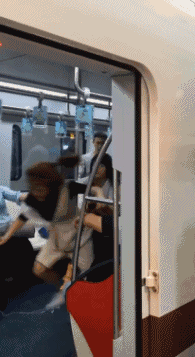
source
无论你是否在任何一个国家旅行,
如果你不想因为繁忙的火车而感到恐惧,
按照下面我所总结的一些温馨提示:
どの国を旅するかどうか
あなたが忙しい列車のために怖がっていると感じたくない場合は、
私が以下に要約したヒントのいくつかに従ってください:
1.) Avoid traveling during rush hour | 避免在高峰时间旅行 | ラッシュアワーでの移動は避けてください
- You don't want to squeeze yourself with white-collars in the train with your luggage toting around.
- Rush hour in workdays typically happens from 7am to 9am, 12pm to 1pm, 5pm to 7pm.
- Sunday afternoons are another busy time, as many people are off from work or returning from weekend travels.
- 不要拖着你的行李和白领族一起在车箱内挤。
- 工作日高峰时间通常发生在上午7点至上午9点,下午12点至下午1点,下午5点至晚上7点。
- 周日下午是另一个忙碌的时间,因为许多人下班或周末旅行返回。
- 車内のホワイトカラーの労働者と一緒に荷物を引っ張らないでください。
- 平日のラッシュ時間は、通常、午前7時から午前9時、午後12時から午後1時、午後5時から午後7時までです。
- 日曜日の午後は、多くの人が仕事や週末の旅行から帰ってくるので、もうひとつの忙しい時間です。
2.) Read train map carefully | 仔细阅读火车地图 | 列車の地図を注意深く読んでください
- Be clear of which station you are heading to.
- Pay attention to the legend which has distance identifier. Sometime you may be able to walk from one station to another, by bypassing multiple stops.
- Download the city train map or get a free copy from passenger service counter.
- 清楚你要前往哪个车站。
- 注意带有距离标识符的图例。有时你可以绕过多个站点从一个站点走到另一个站点。
- 下载城市列车地图或从乘客服务台获取免费副本。
- あなたはどの駅に行くのか知っています。
- 距離識別子付きの凡例に注意してください。 1つのサイトから別のサイトに複数のサイトをバイパスすることがあります。
- 都市列車の地図をダウンロードするか、乗客サービスデスクから無料のコピーを入手してください。
3.) Plan routes wisely | 明智地规划路线 | あなたのルートを賢明に計画する
- Once you understand the train map, set your itinerary cautiously by checking out the most congested commuter traffic so you can avoid heading to the same direction.
- Use Google Map (not applicable to China) to outline your plan.
- 一旦你了解了火车地图,通过检查最拥挤的通勤交通来谨慎设置你的行程,以避免前往同一方向。
- 使用Google地图(不适用于中国)概述您的计划。
- 列車の地図を理解したら、最も混雑している通勤者のトラフィックをチェックして、同じ方向に行かないように注意深くスケジュールを設定します。
- Googleマップを使用してプランの概要を示します(中国では利用できません)。
4.) Learn to locate the train platform and exit | 学会找到火车平台和出口 | 列車のプラットフォームと出口を見つける方法を学ぶ
- Keep an eye on directive sign to mark down which platform you are at and which exit you should follow.
- If traveling during rush hour is essential, position yourself on the platform either on the first or last car of the train.
- 密切关注指示牌,记下您所在的平台以及您应该关注的出口。
- 如果必须在高峰时段乘搭列车,请将自己放在列车的第一辆或最后一辆车上的平台上。
- 標識に細心の注意を払い、あなたのプラットフォームと心配すべき出口に注意してください。
- ピーク時間帯に列車に乗る必要がある場合は、列車の最初または最後の列車に乗ってください。
5.) Always be courteous | 始终保持礼貌 | 常に礼儀正しい
- The signboards are everywhere which somewhat makes travelers confused but remain calm even when you were lost.
- Locate the directory board to see "You're Here" spot indicator.
- Be kind and friendly especially when you ask for help.
- 招牌无处不在,有时会让旅客感到困惑,但即使在迷路的时候也保持冷静。
- 找到目录板以查看“你在这里”现货指示器。
- 当你寻求帮助时,必须友善。
- 看板はどこにでもあり、乗客には混乱を招くこともありますが、紛失しても落ち着いてください。
- 「あなたはここにいる」スポットインジケータを見るためにディレクトリボードを探します。
- あなたが助けを求めるとき、あなたは親切でなければなりません。
6.) Respect the local country's culture | 尊重当地的国家文化 | 地元の文化を尊重する
- Each country is uniquely diversified cultural. Learn to study rules and laws beforehand for the "Do and Don't".
- 每个国家都是独特的多元文化。学会为“忌讳”学习规则和法律。
- 各国はユニークな多文化です。ルールと法律を "真に"学ぶことを学ぶ。
Happy Travel Happy Riding | 愉快旅行愉快乘搭 | 旅行やハッピーライドに楽しい
Not to surprise that you face culture-shock,
be it your trip to Japan, Hong Kong or Singapore.
Train primarily plays important role to
transport commuters to their respective destination.
Not only it represents the country economical growth
but also a platform to showcase local culture to the world.
Be kind be respectful be courteous.
不要惊讶你面对文化冲击,
不管是你到日本,香港还是新加坡的旅行。
列车扮演重要角色
运输通勤者到他们各自的目的地。
它不仅代表了国家的经济增长
也是向世界展示当地文化的平台。
敬请恭敬
文化的ショックに直面していることに驚かないでください。
日本、香港、シンガポールへのあなたの旅です。
電車が重要な役割を果たしている
通勤者をそれぞれの目的地まで輸送する。
それは、国の経済成長だけでなく
また、地元の文化を世界に示すためのプラットフォームです。
尊敬してください。
Last but not least
I would love to show you the JR trains I took last winter (Feb 2017) during my Tohoku trip :)
最后
我想向大家展示我去东北旅行期间搭过的JR火车经验(2017年2月)
最後
私は北東への旅行の際に私が使ったJR列車の経験をお伝えしたいと思います(2017年2月)
Mind the platform gap. | 请注意平台空隙。| プラットフォームのギャップに注意してください
Do-do-do-do
🚆 🚉🚆 🚉🚆 🚉🚆🚉 🚆🚉 🚆🚉 🚆🚉 🚆🚉 🚆🚉 🚆🚉 🚆🚉 🚆 🚉🚆🚉 🚆🚉 🚆🚉 🚆🚉
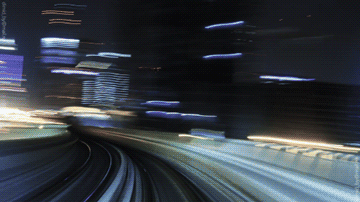
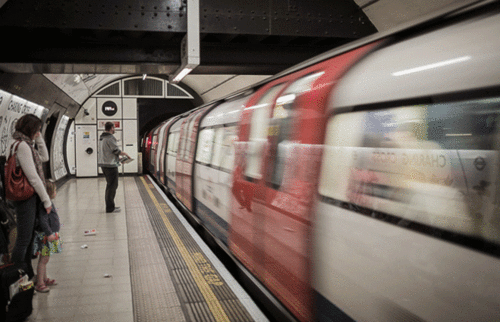

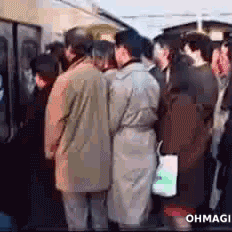
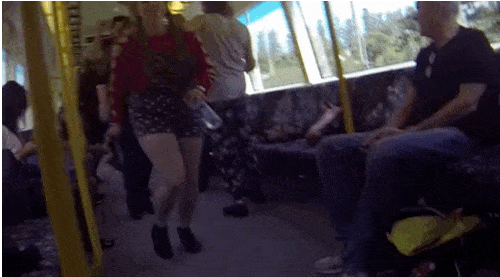
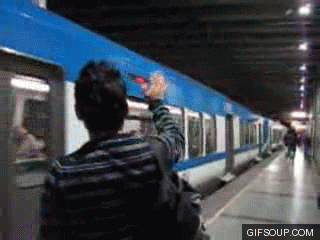
Nice to meet you! My name is Yotaro in Japan! !
I found a post from the tag of # hkjpsg!
It was a very interesting post!
Thanks! Your coffee and desserts look so tempting!
Thank you for replying to comments!
I am glad you said that way!
I posted on this "hkjpsg challenge" as well! !
Please come and have a look!
I'm happy to have your comment on this post!
https://steemit.com/food/@ytrphoto/top-10-restaurants-in-japan-hk-jp-sg-cross-community-challenge
I just did ;)
Perhaps I should ask you to be my food tour guide when I'm in Tokyo
I see!
I will do a food tour guide in Tokyo! !
The longest post I've seen😄
LOL because of 3 languages dragging it so long haha
Excellently summarise of the railway scene for these 3 countries.
No balloons on HK MTR seems weird.
Probably balloons pop sounds like a boom! haha Some rules on HK MTR are quite weird enough also.
Congratulations @seandeanayao! You have completed some achievement on Steemit and have been rewarded with new badge(s) :
Click on any badge to view your own Board of Honor on SteemitBoard.
To support your work, I also upvoted your post!
For more information about SteemitBoard, click here
If you no longer want to receive notifications, reply to this comment with the word
STOPAvoid rush hours in HK or you will end up like a cramped sardine.
Yeah right, same as Singapore MRT! I'd rather wait slightly later
wah you managed to find so many gifs of those train incidents.
That woman slapping one is LOL
Be courteousLOL
Sharp eyes! Thanks to Mr. Google :)
Thanks for this article! It helps us understand the local culture through their train systems and etiquette.
That's one of the purposes of HK-JP-SG Cross Challenge, not only to get these Steemian communities closer but also provides useful informative guides in local culture. Thank you for hosting this challenge.